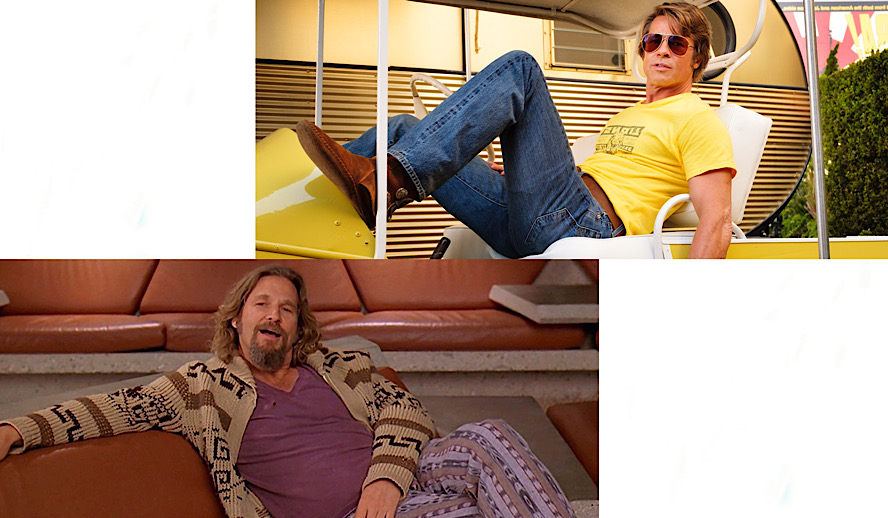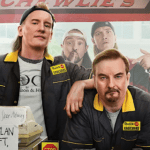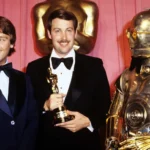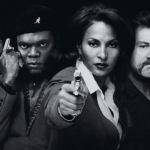Table of Contents

Photo: The Big Lebowski/Gramercy Pictures
First: what exactly is a “hangout” movie? Is it a film genre? An aesthetic? An absence of a three-act plot maybe? A film that contains characters that you’d want to hang out with if they were real? Or is it just hanging out and watching an enjoyable film? The answer is: yes, it is. It’s all of those things and more than all of them too. For me, the hangout movie is something that speaks to the truth of all of our lives, all of our experiences in the world, both the profound and the mundane, because truth is often expressed in both, sometimes simultaneously: the way we move through the world and touch people’s lives, don’t touch them, want to be touched, in what is said, can’t be said, wants to be said, in seeing something immovably beautiful because it is, then isn’t, and then wants to be again.
Related article: Oscars 2021 Winners: The 93rd Show With Record-Breaking Historic Successes, Shocks and Surprises
These are films that express the mundane and profound truth of the most important features of our lives: of love, of identity, of meaning, so we can hope to have, to be, to become; these are films that engage us at the most basic, essential human level, on a plane of desire: what do we want? How do we want to? Where do we want to? When do we want to? Who do we want? Why do we want? From Cassavetes to Jarmusch to Linklater, from before and beyond, the hangout movie continues to endure and evolve, as much as the concept of hanging out stays the same and changes.
I think it’s because these are always questions we must ask ourselves, features that shape our lives, sensations we feel, their presence, their weight, their importance; these things endure as much as the practice of hanging out changes. So, all of that said, I think it’s about time we sit back, maybe try to chill out a little bit, grab a drink, and give these films the metaphorical beer that they deserve.
A Recipe for Hangout Movies: Complex and Robust, or You Know It When You See It
The hangout movie, as we all generally understand it to be, appears a certain way and appears this way across a broad spectrum of film genres: drama, comedy, romance, and even horror. The phrase “you know it when you see it” comes to mind. In this way, I am inclined to say that it’s more an aesthetic like film-noir is than it is a genre, and as an aesthetic, the hangout movie has a particular form, a particular structure, hence “you know it when you see it”.
The foremost quality of this structure is that it often eschews narrative form, as we understand narrative to be, that is: the plotted out three-act narrative structure, a dramatic, causal sequence, where one thing, usually a problem, conflict, or obstacle leads to another thing, leads to another thing, leads to some sort of resolution (or maybe not) at the story’s climax and conclusion. These are movies where nothing seems to happen narratively, even though, of course, things are always happening; not because the narrative needs them to happen but because they just happen, unfolding more through the characters, their performances, and the world these characters exist in rather than through the narrative itself; but, even then, a narrative can be present in the film and often times are, at least on the surface.
Related article: MUST WATCH – Hollywood Insider’s CEO Pritan Ambroase’s Love Letter to Black Lives Matter – VIDEO
Subscribe to Hollywood Insider’s YouTube Channel, by clicking here.
Many Quentin Tarantino films are an example of this phenomenon from ‘Reservoir Dogs’ to ‘Pulp Fiction’ and ‘Jackie Brown’ to ‘The Hateful Eight’ and ‘Once Upon a Time in Hollywood’. ‘Once Upon a Time in Hollywood’ is a particularly good example of a narrative designed more for its characters than for itself; ostensibly, the plot surrounds aging Hollywood actor, Rick Dalton, played by Leonardo DiCaprio, as he tries to revitalize his career before slipping away into irrelevance, swallowed up by the Hollywood dream factory; but the film becomes more about his relationship with his stunt double, Cliff Booth, played by Brad Pitt, and that friendship’s relation to the overall narrative than it is just about Rick Dalton. One of the most memorable scenes of the movie involves the characters just sitting around Dalton’s house in the Hollywood hills, watching Dalton act in a television show, drinking beer, smoking cigarettes, and commenting on Dalton’s performance.
In fact, in the film, the characters prevent something of historical, narrative significance from happening; they work against the narrative of the film, or the narrative surrounding the real-life events outside of the film, which frame the events of the film and make the film possible as an idea, rendering those events as less important than the men’s bond with each other. The film uses the idea of narrative to become something more than its narrative, differentiating the hangout movie from any other movie, say one where two or more characters speak to each other in a scene.
Like many filmmakers of his generation, Tarantino doesn’t privilege narrative over his characters, their relationships, the actor’s performances, or the ideas of the film. Other filmmakers with similar film philosophies include Kevin Smith, the director of the Sundance smash-hit and essential hangout movie, ‘Clerks’, as well as ‘Mallrats’, another essential ‘90s hangout flick, and Richard Linklater, hangout movie master and director of hangout-core’s ‘Slacker’, ‘Dazed and Confused’, ‘Everybody Wants Some!!’, and the “Before Trilogy”.
While these men may have mastered the hangout movie, the aesthetic had its beginnings, at least, since the late 1950s, emerging as part of the broader tradition of American New Wave Cinema (though this isn’t to say that the hangout movie is a distinctly American phenomenon; many European directors have made hangout movies; but that’s beyond the scope of this article). Actor-turned-director John Cassavetes was at the forefront of this tradition, largely a reaction against the epic Ben-Hur-sized films of Hollywood at the time, embracing a more intimate, a more “real” film sensibility, which would later characterize what would become the “hangout movie” several decades later. Cassavetes continued to create and explore these intimate character portraits, from his first film, ‘Shadows’, more an immersion into the late ‘50s beatnik world than a character study, to ‘Big Trouble’ in the late ‘80s.
In between then, American New Wave Cinema began to take form, a form that inspired the hangout movie maestros of the 1990s, who all grew up during this time period, watching the hangout movie aesthetic being carved out by American New Wave artists like Cassavetes in the ‘60s, Dennis Hopper in the ‘70s, whose film ‘Easy Rider’ firmly established American New Wave Cinema as part of a larger cultural shift and, as a road movie, because road movies often become hangout movies, became the proto-hangout movie par excellence, and Jim Jarmusch in the ‘80s, whose film’s ‘Permanent Vacation’, ‘Stranger Than Paradise’, and ‘Down by Law’ offered a return to the American New Wave Cinema of the ‘70s after it began to die down in the late ‘70s due to the resurgence of the modern American blockbuster, as seen by Spielberg’s ‘Jaws’, which would culturally dominate the ‘80s.
Of those filmmakers, who so enthusiastically embraced the aesthetic championed by American New Wave Cinema, Richard Linklater’s films, for me and for many other people, express most succinctly and most powerfully the essence of the hangout movie, what this movement away from narrative does, what it means, why it returned in the ‘90s, and why it continues on as a popular aesthetic today.
Related article: Hollywood Insider’s CEO Pritan Ambroase: “The Importance of Venice Film Festival as the Protector of Cinema”
Related article: The Masters of Cinema Archives: Hollywood Insider Pays Tribute to ‘La Vie En Rose’, Exclusive Interview with Director Olivier Dahan
Just Keep on L-I-V-I-N
As I stated before, Linklater is a master of the hangout movie aesthetic, his second feature film, ‘Slacker’, reinvigorating the style in 1990, garnering Linklater attention as an up-and-coming director. The film follows the lives of several aimless GenXers around Austin, Texas, over the course of a single day, the characters discussing everything under the sun, from conspiracy theories to contemporary issues, usually with some sort of philosophical musing. This relatable, pseudo-philosophical, quasi-mystical dialogue becomes not only a part of Linklater’s aesthetic as a director but also of the hangout movie aesthetic as a whole, becoming one of its main forms of expression, in addition to, of course, the absence of a dramatic narrative.
These sorts of philosophical musings find their purest expression in the Coen Brothers’ ‘The Big Lebowski’, in the sage-like slacker wisdom of the eminently quotable Dude, played by Jeff Bridges, which spawned an entirely comprehensive, real-world lifestyle movement. Linklater also has a Dude-esque character, the mid-20s mystic Wooderson, played by a young Matthew McConaughey, in Linklater’s follow up to ‘Slacker’, ‘Dazed and Confused’, the burnout former-footballer, still reliving the almost endless freedom of his youth, mingling with the current high-schoolers, as their local legend, proclaiming to them the profound truths of life, uncovered by Wooderson in his rigorous philosophical investigations of life: “Let me tell you this, the older you do get the more rules they’re gonna try to get you to follow. You just gotta keep livin’ man, L-I-V-I-N.”
While there is a sense that these characters and what they say might easily slip into parody, they never do in these films because they’re always grounded in the logic of the worlds that they help bring to life, and most of us probably know a Dude or a Wooderson in real life, whether you met him at a bar or somewhere else; those characters are universal, speaking the things that we know to be true; and they help us to relate to the film and relate that film to our lives.
Related article: Want GUARANTEED SUCCESS? Remove these ten words from your vocabulary| Transform your life INSTANTLY
Related article: The Rise of Matthew McConaughey: A Tribute to the Powerful Thespian & Superstar Leading Man
If you could only pick one film to describe the hangout movie, most people would pick ‘Dazed and Confused’. I feel like I probably don’t even have to describe what the film is about; it’s that influential, that colossal of a hangout movie, of a movie, in general. Even still, it’s a movie, again that takes place over the course of a single day, but this time on the last day of school May 28, 1976, in Austin, Texas, following around a group of incoming freshman and high school seniors (and Wooderson), as they all look for something to do, a way to spend their time and have some fun.
People often talk about Linklater’s engagement with the experience of time; I mean, he famously filmed ‘Boyhood’ over the course of 12 years; it doesn’t get much more engaged than that; but even before that, Linklater is already exploring time in significant ways, framing his stories around the events of a single day to explore that day in detail, completely attentive to those smaller moments that give way to those larger-than-life experiences, characters, which, again, he’s only able to do because he’s abandoned dramatic narrative. There’s this moment in ‘Before Sunrise’, a film that again follows two characters, Jessie, played by Ethan Hawke, and Celine, played by Julie Delpy, as they spend a night together somewhere in Europe, after meeting each other on a train, one night before they each ostensibly part ways, never to see the other again, where the characters are in a recording booth, listening to music together, eyes locking and then nervously looking away, wanting to kiss the other, wanting so bad to kiss each other but being unable to.
If you’ve ever kissed someone or wanted to kiss someone but didn’t, then you know exactly how that moment feels; it feels like everything, like eternity itself, but an eternity that’s right there, able to be felt, to be had, even if only for a moment, if you’re courageous enough. That’s the beauty of the hangout movie; a moment like that has no real narrative significance; it’s just a feeling, a sensation that we all know, that we’ve all experienced, want to experience, that we can experience again because of the hangout movie’s engagement with time.
Related article: Once Upon a Time in Hollywood Review: A Stylized Love Letter to 1969
Related article: Video: Reactions From Stars on Leonardo DiCaprio’s Rick Dalton & Brad Pitt’s Cliff Booth in Quentin Tarantino’s ‘Once Upon A Time In Hollywood’
Hanging Out on the Wind
There’s another Texan with a penchant for making hangout movies, a name that you never hear mentioned when people talk about hangout movies, because his films, on the surface, don’t appear to be hangout movies at all, but, nonetheless, have a form similar to the hangout movie, an openness to time, touching on its softer moments, its smaller sensations, and exploring the ideas contained within those sensations in the most spectacular way: the great American auteur, Terrence Malick. Like many of the other directors I’ve mentioned so far, Malick’s films, especially his earlier films before the “Weightless Trilogy”, have narratives on the surface, but these narratives, again, are in service to something else; for Malick, these “narratives” service an obsession for catching and expressing the breath of life, the moments of eternity’s passing, either in the actor’s performance or in the world surrounding the actor.
Here an actor touching a blade of grass or their lover’s hair, speaks as much, or maybe more, than any line of spoken dialogue, although, of course, Malick still employs dialogue in his films; except, more than any other director I’ve talked about, he utilizes voiceover as the principal technique for musing philosophically; but in a Malick film, it’s primarily those little, fleeting moments, the look of an eye, a subtle movement of a hand, that form the body of Malick’s hangout movie.
In the “Weightless Trilogy”, Malick’s series of films after 2011’s ‘The Tree of Life’, all semblance of narrative is cast aside almost entirely in favor of an emphasis on these sensations, and, in these sensations, Malick’s characters can begin (or not) to reconcile a torn love affair (‘To the Wonder’), a torn soul (‘Knight of Cups’), and a torn passion (‘Song to Song’) because sensation is our first means of contact with the world, with the people of that world, and beyond: for Malick that beyond is God, for others that might be something else; the point is: hangout movies give us the time to make contact with what we need to reach, what we want to reach, to maybe to get to the why of it all; certainly, that’s what Malick is interested in.
Related article: A Tribute to Terrence Malick: An Evolution of Thought on Film
Related article: The Before Trilogy: Ethan Hawke & Julie Delpy’s Gut-Wrenching Look at Evolution of Love within a Relationship
To have the time to think about why we act, why we do things, why things happen is almost as important, if not more important, than the things happening themselves, otherwise, we become just as momentary as a stroke of wind against an endless field of wheat, to borrow an image from Malick’s filmography; and while Malick might insist that we should carry ourselves with that kind of grace, I also believe that his films recognize the impossibility of becoming anything other than what we are: people, imperfect, but people that can give and find meaning in the beauty of what passes before us, if we take the time to consider what’s passing before us is as real as we are. Nothing escapes time, not even the moment, but the sensations that make up the moment, that’s forever; that’s what hanging out is all about.
Until Next Time
Like all good hangout sessions, we must now part ways with the hangout movie. We’re both a little drunk, a little excited about the things to follow, but, mostly, we’re happy about right now. The hangout movie has nowhere to be but here, and when you give yourself to it, you always get something back, whether it’s a good time, a laugh, a cry, a thought, a line, a love, a life, so we’ll look forward to seeing each other again like old friends because there’s nothing but time until the next time, how you spend that time, that’s the fun part.
An excerpt from the love letter: Hollywood Insider’s CEO/editor-in-chief Pritan Ambroase affirms, “Hollywood Insider fully supports the much-needed Black Lives Matter movement. We are actively, physically and digitally a part of this global movement. We will continue reporting on this major issue of police brutality and legal murders of Black people to hold the system accountable. We will continue reporting on this major issue with kindness and respect to all Black people, as each and every one of them are seen and heard. Just a reminder, that the Black Lives Matter movement is about more than just police brutality and extends into banking, housing, education, medical, infrastructure, etc. We have the space and time for all your stories. We believe in peaceful/non-violent protests and I would like to request the rest of media to focus on 95% of the protests that are peaceful and working effectively with positive changes happening daily. Media has a responsibility to better the world and Hollywood Insider will continue to do so.”
Ways to support Black Lives Matter Movement to end systemic racism
More Interesting Stories From Hollywood Insider
– Want GUARANTEED SUCCESS? Remove these ten words from your vocabulary| Transform your life INSTANTLY
– Compilation: All James Bond 007 Opening Sequences From 1962 Sean Connery to Daniel Craig
– Do you know the hidden messages in ‘Call Me By Your Name’? Find out behind the scenes facts in the full commentary and In-depth analysis of the cinematic masterpiece
– A Tribute To The Academy Awards: All Best Actor/Actress Speeches From The Beginning Of Oscars 1929-2019 | From Rami Malek, Leonardo DiCaprio To Denzel Washington, Halle Berry & Beyond | From Olivia Colman, Meryl Streep To Bette Davis & Beyond
– In the 32nd Year Of His Career, Keanu Reeves’ Face Continues To Reign After Launching Movies Earning Over $4.3 Billion In Total – “John Wick”, “Toy Story 4”, “Matrix”, And Many More
hangout movies, hangout movies, hangout movies, hangout movies, hangout movies, hangout movies, hangout movies, hangout movies, hangout movies, hangout movies, hangout movies, hangout movies, hangout movies, hangout movies, hangout movies, hangout movies, hangout movies, hangout movies, hangout movies, hangout movies, hangout movies, hangout movies, hangout movies, hangout movies, hangout movies, hangout movies, hangout movies, hangout movies, hangout movies, hangout movies, hangout movies, hangout movies, hangout movies, hangout movies, hangout movies, hangout movies, hangout movies, hangout movies, hangout movies, hangout movies, hangout movies, hangout movies, hangout movies, hangout movies, hangout movies









